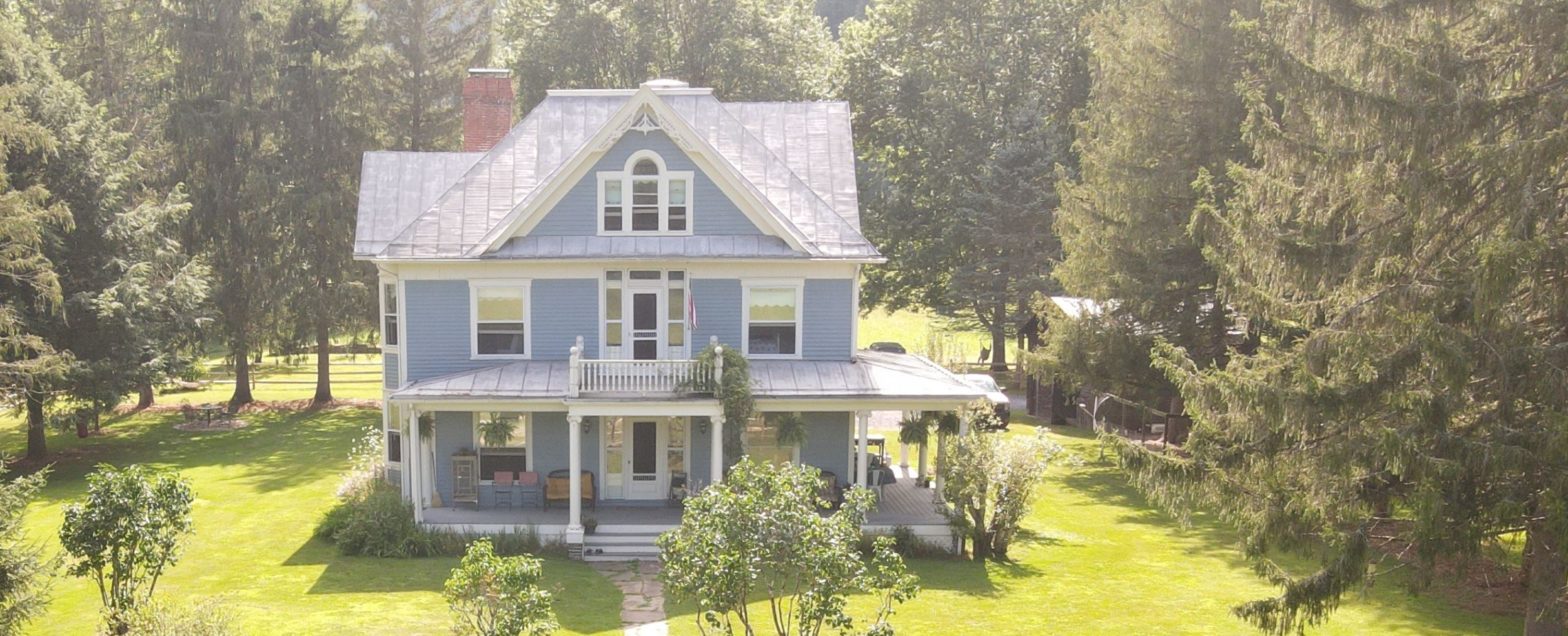Jenningston, West Virginia
The saying goes if you blink, you’ll miss it – but in Jenningston, you don’t even have to blink. What was once a boom town is now a country setting with little to give away its rich and industrious past; however, there are still a handful of residents who know a lot of the town’s history.
Jenningston was named for founders Bishop W. Jennings and brother, Cortez H., who were Pennsylvania loggers. The brothers owned a small sawmill in Lopez, PA., and in late 1899, purchased the timber rights to 2,160 acres of land on the east side of the Laurel Fork River. The brothers began purchasing in the area now known as Jenningston in 1900 because their Pennsylvania sawmill was closing, and the small valley that lies cradled along the Randolph and Tucker County lines was prime for timber harvesting. According to Cindy Phillips’ book, “Images of America: Tucker County,” Jenningston was laid out in three parallel lines.
In 1905, the brothers took the first step in establishing Jenningston; they chartered a railroad from Pocahontas to Randolph County. The train ran from what is now Stover to Seneca Road, and by April of that year, work to begin a company store in the new town of Jenningston had begun. By August, the store was ready to open. By November, a post office opened and 35 men from Pennsylvania had relocated to the boom town. Today, there is little left of the town that the Jennings brothers established, but nonetheless, they created much in the short hey-day of Jenningston.
In 1906, telephone service was brought into Jenningston, and by 1907, the saw mill was producing 125,000 feet per day. However, the Jennings brothers did not stay in town long. Bishop Jennings died in 1906 from a self-inflicted gun shot wound to the head. His son, W.W. Jennings, took his father’s place in the family business, but by 1909, the Jennings’ had sold all of their property to the newly formed Laurel River Lumber Co.
According to Jenningston resident Mary Katherine Salovaara, the lumber industry in Jenningston was destined to die as the trees in that area were harvested. According to Salovaara, who camped with her family in Jenningston as a child, the trees were completely stripped off the valley in the mid-1920s. This is a common downfall to the extractive industries.
According to Phillips’ book, the transition from a boom town to a ghost town is one that many West Virginia towns went through, but in Jenningston that transition was abrupt. It may have been more extreme because of its isolation but it could have also been because the town relied on a single industry – lumber. The railroad came in for the lumber and went out with it. This is a common trend in Appalachia.
According to an historical account of Jenningston by Keith Allen, the Jennings family sold 18 miles of railroad, 400 feet of uncut timber, the sawmill, company store and Jennings’ houses as well as livestock for approximately $1.4 million. That is a significant amount of money for that time. Jenningston did continue to grow under the industrial pursuit of the Laurel River Lumber Co. By 1912, there were two restaurants, a Methodist church, a barber shop and a doctor. However, that same year, severe flooding damaged the neighboring lumbering camp called Perley and Crockett Lumber Co. Population in Jenningston dropped from 600 to 400 and Perley and Crockett closed its doors. The small businesses such as the company store and Emma Coberly’s Restaurant also closed and in turn the decline of Jenningston began.
By the time resident Sis Schoonover, a Jenningston native, was born in 1926, the booming life of the town had already begun to fade. “Everything was gone by the time I was born except the big house (which still stands today) and two other company houses,” she said. Although most of Jenningston had already faded away by the time Schoonover was born, she did attend school until the third grade and the Methodist Church was still open. Schoonover said she can remember as a small child there weren’t any trees left in the valley, but she remembers swimming in the river and playing in the woods. She also remembers the Jitney, which was a small train that ran from Jenningston to Parsons. The two company houses were destroyed in the flood of 1985 that washed away all buildings’ remains of the lumber town except the “big house” which was the original home built by the Jennings brothers.
Today, the “big house” is known as the Laurel River Club BnB and is a perfect place to unwind and recharge in the country as well as play, fish, or tube in the nearby river.
Article Credit, 2015: Leah Dietz, Staff Writer for The Intermountain
